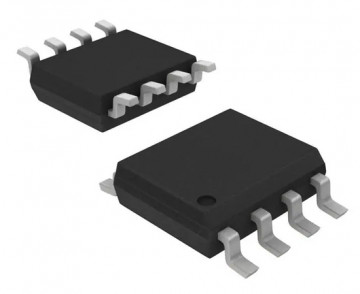|
Supply voltage range:
|
2.7~5.5V |
|
Case:
|
SOP08 |
|
RAM memory:
|
32kB |
|
Frequency:
|
1,000MHz |
|
Manufacturer:
|
Cypress |
|
Architecture:
|
8-bit |
|
Operating temperature (range):
|
-40°C ~ 85°C |
|
SPI interface:
|
NO |
|
TWI (I2C) interface:
|
YES |
|
ADC:
|
NO |
|
CAN interface:
|
NO |
|
DAC:
|
NO |
|
ETHERNET interface:
|
NO |
|
Encryption:
|
NO |
|
UART/USART interface:
|
NO |
|
USB interface:
|
NO |
Detailed description
Selected features:
- capacity: 256 Kbit;
- organization: 8-bit;
- serial access: 2-Wire/SPI interface;
- interface clock frequency: 1/20 MHz;
- data retention in memory: min. 10 years;
- no delay for write/read operations (NoDelay™ Writes);
- current consumption:
a) in active state: max. 200 µA;
b) in standby mode: max. 10 µA;
- compatibility with EEPROM memory;
- supply voltage: 2.7÷5.5 V;
- operating temperature: -40÷85°C;
- available in package: SOP08.
FRAM memory is made from a ferroelectric material called PZT (lead zirconate titanate), which has the ability to remember one of the two directions of the electric field. The information storage uses the ferroelectric effect – when an electric field is applied, a permanent change in the polarization of the molecules occurs. The absence of the electric field does not cause any change in polarization. You can imagine the memory cell as a capacitor with a ferroelectric material as the dielectric, charged alternately with voltage of opposite polarity. By changing the polarization of charges in such a capacitor, two stable states corresponding to the logical states "0" and "1" can be stored.
FRAM memories are known as non-volatile RAM. They combine the benefits of RAM with random access and read-only memory (ROM). They are characterized by fast read and write speeds, an unlimited number of write/erase cycles, and data non-volatility – disconnecting the power supply does not cause the stored information to be lost; refreshing the data is not necessary. FRAM memories are used where high-speed operation, low power consumption, and data security are required.

